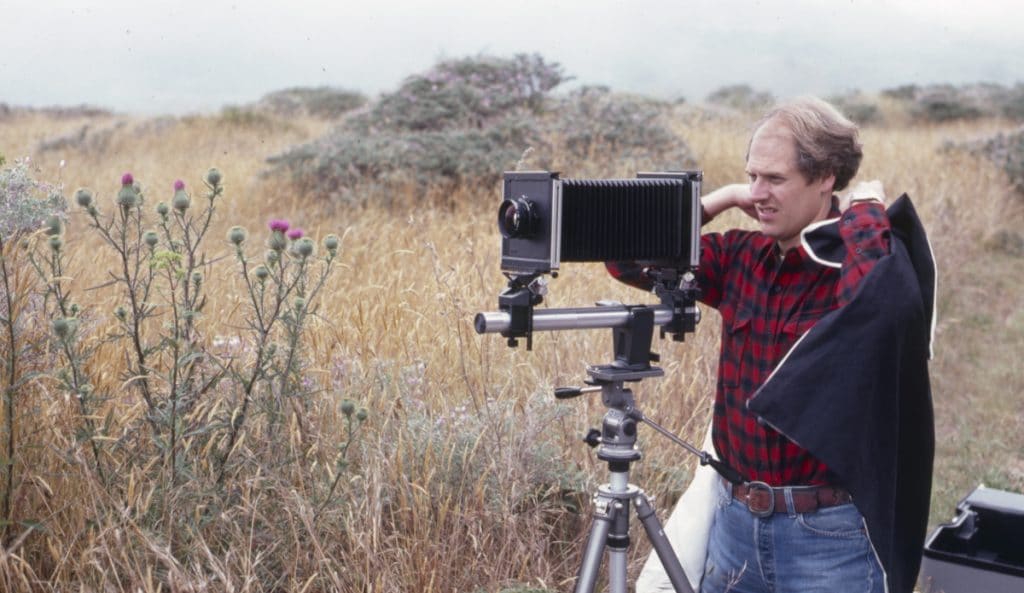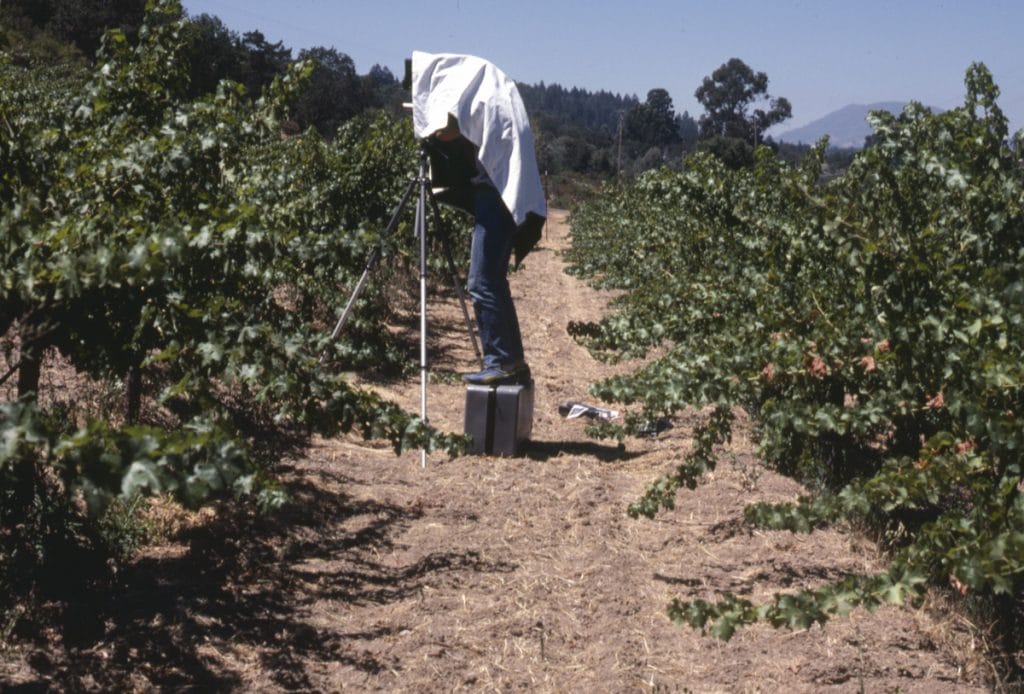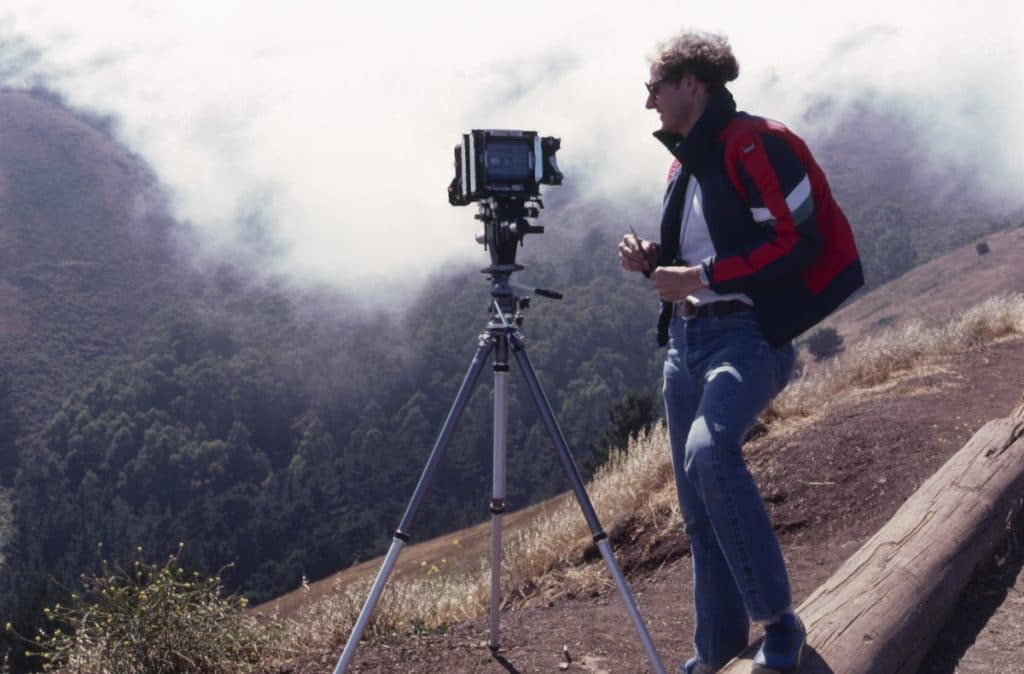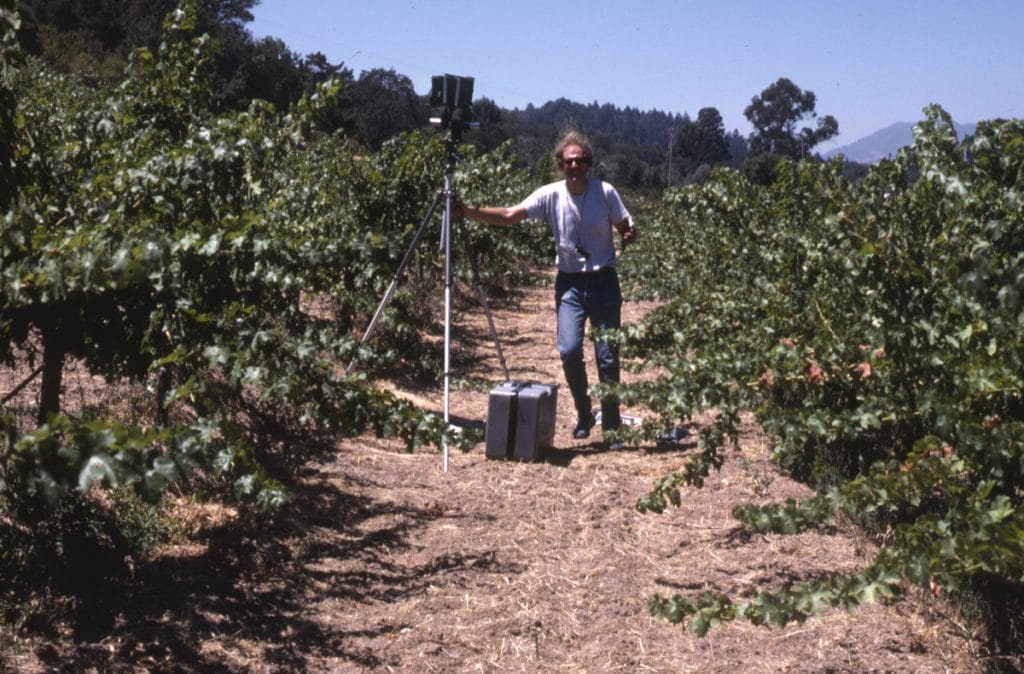Today’s cameras are marvels. It’s hard — impossible? — to find a truly bad one that costs more than, say, a thousand bucks. And there are plethora of truly great ones, cameras with capabilities that were the stuff of science fiction a generation or two ago.
Today, I’m going to tell you about the worst camera I ever owned. Well, the worst camera with serious photographic pretensions. Some folks would call the Brownie Hawkeye that got me started in photography a bad camera. I think of it more as a camera with low aspirations. My first 35 mm camera was an Argus C3. Some would call that little Bakelite brick of a camera a cruel joke. But it was just trying to be a basic, cheap (really cheap) starter camera.
In 1983 I was using a 6×6 Hasselblad, and decided that I wanted to get into large format field photography. I’d had a Speed Graphic previously, so I knew what I was getting into, but I wanted a camera with more movements. Sinar had introduced what they called a field version of the well-respected P series, the Sinar F. Like the P, it was a monorail camera but it dropped the geared movements in favor of friction locks, saving weight and lowering the manufacturing cost.
When I described my needs to my favorite salesman at Keeble and Shuchat (RIP), he recommended the F. I bought it, Nikon 210mm and 90 mm lenses, two lens boards, a dozen holders, a Polaroid back, and a big Sinar fiberglass box to carry it with. I already had a Gitzo tripod and a Pentax spotmeter. It was immediately apparent to me that this was not a camera that wanted to venture very far from the car, but I thought I could manage a few hundred yards.
Here I am my very first day in the field with the Sinar F.
I soon discovered that this camera took a long time to set up. The movement locks were none too strong to start out with, but what made matters much worse was the fact that, to store the camera in the case, the front and rear standard had to both be aligned parallel to the rail (ninety degrees from their operating position). To do that, you had to disconnect at least one end of the bellows. I practiced and practiced, but never got very fast, and got tired of watching the light change from great to blah as I was setting up for the shot.
I did find one good use for the case, though:
Here I am waiting for a Polaroid to develop and hoping the fog stays photogenic.
After I had the camera set up, I had to center the movements, and that took a while.
So, let me check the boxes.
- Bulky? Yep.
- Heavy? That, too.
- Slow to set up? Right.
I call that three strikes.
This would have been a perfectly fine studio camera for a photographer who couldn’t afford a Sinar P. So in calling it a bad camera, I really mean it was a bad field camera for someone like me.
After two years of struggle, I bought a Linhof Master Technika. I was never so happy to be done with a camera as I was with that Sinar F.




My worst camera was the Minolta XD7, also known as the XD11…
I liked it very much, but most things were wrong about it. It was a company doing mechanics who tried to play in an electronic game.
Minolta also had a really nice camera, the XM. It was also fake electronics, I would guess, but it was a wonderful camera.
The Sinar F was my “first” 4×5. I too bought mine from K&S after a Sinar event where I was mesmerized by the dial gauges for calculating Scheimpflug tilts. As you also discovered, it was not very “field” worthy. I replaced mine within a year or so with a Toyo 45AR (and later an Arca-Swiss Field). I can’t say it was the worst camera I ever owned. That title probably goes to a 1950’s era Exacta. But my feelings for the Sinar F are, all in all, pretty similar to yours.
Recently, I bought a Sinar p. I did this after using Zone VI and, of course, digital. I do not take it outside the house, not even outside my room. It stands on a wooden tripod and is beautiful!
Basking in the glow of their “home run with the bases loaded” success that was the Olympus XA film compact, they rapidly squandered their reputation during their early forays into digital. The C-3030 digital compact used “Smart” Media data cards which readily broke because they were as thin as paper and had two different voltage specs (use the wrong kind and you might freeze the camera). It scraped it’s front element against the lens cap and I had to pop the lens front assembly one or sometimes two clicks of the rack and pinion zoom drive more than twice a day to get the lens back to pointing forward.
> but what made matters much worse was the fact that, to store the camera in the case,
pardon my ignorance – why didn’t you simply get a different case ?
If you tried to store the camera ready for shooting, say, in a big lighting gear case, there was no way (that I could figure out) to protect it from shock and bumps. The Sinar case at least had fitted foam.
remove the extension rail and stick the end cap on the 12″ rail. Then move both standards to the extreme ends and lock them down. remove the bellows from only one side and tilt that size down so it rests on the rail. Then raise the standard on the other side and tilt it until it lays parallel on top of the other standard. then it’s ready to go. If I use my smaller rodenstock grandagon 135mm 5.6 it will fit this without removing the lens. The way I do it is the front standard has the bellows attached and tilts down then the rear standard tilts forward and over the front which protects the lens. Then I have a ground glass protector so there are no problems with cracking the glass. it sounds like a pain but it’s the easiest way I’ve found and this way it breaks down and reassembles ready to shoot in under 2 minutes. Also I hear everyone saying how heavy these Sinar F’s are but I’ve also owned a Toyota 45AII and that was as heavy if not heavier. The only thing the folders have going for them is size. Still, breaking the F down the way I do I can slide it into the same backpacking pack I would have used with my Toyo 45AII and it fits with my 2 lens kit, light meter, dark cloth, and 4 Toyo Film holders. Obviously not the best setup take on a multi-day backpacking trip but for day hikes it works perfectly for me.
My worst camera was the Sony A7r. I trusted it for more than a year even though I had some initial evidence that the files we’re right. I finally saw the light when I did an apples to apples comparison with the Apo-Sonnar mounted to a D810. I bought the Nikon the next day and never looked back.
I spent more than a year documenting the superiority of the D810 over the Sony and had 5,000 readers at one point.
The worst thing about the Sony was that perhaps the best photos of my wife I ever took have these little 11+7 compression transition flaws that I will never be able to fix. I can look past them on small prints but once bigger than 8×10 they really can’t be unseen.
I was pretty happy to replace my a7R with the II, and now the III. My biggest problem with the a7R was the shutter shock. Most of the time when I thought I’d found a compression artifact, I inspected the raw with RawDigger, and that wasn’t it.
I’ve had 3 F’s, and am using the latest now! I leave a Symmar 180 and bag bellows attached all the time, carry my 90, and keep it on a single 12-inch rail. Love using it outdoors, but it’s not a backpacker. I scout locations, then carry it attached to tripod over my shoulder with meter, film , etc. in a small backpack. My latest has the bail lever back and now (finally!) I can load a holder without moving the rear standard.
As a large format film photographer, through the years I learned that for LF photography, no matter what subject, you need to develop at least 3 skills:
Knowledge of your tool: LF cameras are not snapshot machines. First, master your tool before taking any chance of going out to the field. Forget anything you learned in 35mm and digital. This is a different animal.
Planning: LF takes time, you’ll make less images in a session, you need to plan your shoot so you can make the most of the session.
Patience: Digital makes things so easy that most photographers begin to complain on what LF photographers consider irrelevant. LF is a process, and for a more satisfying experience you need to develop patience.
I use a Sinar F1 and a Linhof Supertechnika IV for field, both I put them into a backpack and I use a ballhead for both in my tripod. Never had any issues and those are very sturdy and precise whe you know how to manipulate them.
Sinar F with my majestic head and bogen legs is heavy. Had a Linhof Technikardan and sold it as it felt too fragile for field work. Currently have a Wista for field work but constrained for variable lens use (needed the 65mm with movements) so am currently using my Sinar F that’s over 30 years old. Repairs are challenging and I noticed that Sinar isn’t carried anymore in the US. Mildly frustrated but I haven’t used it in a long while but that’ how it goes now with LF I think.
I’m quite happy with Toyo cameras in general, my field Toyo 45CF is a little delicate but while carrying a 150mm lens inside, it is also much lighter than my DSLR. The Toyo 45G monorail just needed a little thinking for quick set up. After I bought it in perfect condition for below $200, I found a 150mm short rail to store it on, in the field I can now carry it in a backpack and after putting it on the tripod, it just needs a lens on a board and I can start to pre-focus… love it so much, I now found the 8×10 back standard and bellows to complete my LF gear.